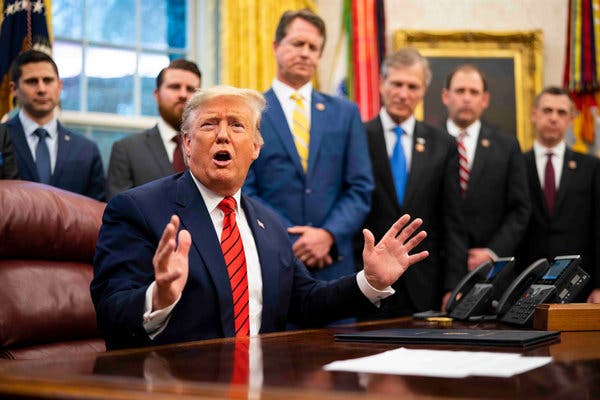Wednesday’s report focuses in particular on the Russian government’s use of this network to push disinformation about the coronavirus pandemic as it spread across the globe.
It does not mention Russian disinformation in the context of the 2020 US presidential election as it falls outside of the mandate of the Department’s Global Engagement Center (GEC), which focuses on foreign propaganda and disinformation aimed at foreign audiences.
However, on the same day the report was released, the Department unveiled “a reward of up to $10M for information leading to the identification or location of any person who, acting at the direction or under the control of a foreign government, interferes with US elections by engaging in certain criminal cyber activities,” in the words of Secretary of State Mike Pompeo.
President Donald Trump has repeatedly downplayed Russia’s interference in the 2016 election — which the US intelligence community believes was aimed at boosting his candidacy and hurting his opponent, Hillary Clinton. It is unclear if there was a specific impetus behind Wednesday’s award announcement or what its impact will be. The US government identified Russian trolls and hackers in 2016 interference without the high-dollar bounty.
Intelligence officials have warned that Russia, China and Iran are seeking to interfere in the upcoming US election, but Trump has not publicly acknowledged those concerns about meddling despite urgent calls from Democrats to release additional information about the threat.
Wednesday’s report describes “Russia’s disinformation and propaganda ecosystem” as consisting “of five main pillars: official government communications, state-funded global messaging, cultivation of proxy sources, weaponization of social media and cyber-enabled disinformation.”
“The Kremlin bears direct responsibility for cultivating these tactics and platforms as part of its approach to using information as a weapon,” the report says.
It asserts that Russia “has operationalized the concept of perpetual adversarial competition in the information environment by encouraging the development of a disinformation and propaganda ecosystem that allows for varied and overlapping approaches that reinforce each other even when individual messages within the system appear contradictory,” which gives it “three perceived advantages.”
“First, it allows for the introduction of numerous variations of the same false narratives. This allows for the different pillars of the ecosystem to fine tune their disinformation narratives to suit different target audiences because there is no need for consistency, as there would be with attributed government communications,” the report says.
“Second, it provides plausible deniability for Kremlin officials when proxy sites peddle blatant and dangerous disinformation, allowing them to deflect criticism while still introducing pernicious information,” it says.
“Third, it creates a media multiplier effect among the different pillars of the ecosystem that boost their reach and resonance,” it says.
“This ecosystem approach is also well-suited to reinforce Russia’s general aims of questioning the value of democratic institutions, and of weakening the international credibility and international cohesion of the United States and its allies and partners,” the report notes.
The report draws on publicly available reporting and provides significant detail on “seven Kremlin-aligned disinformation proxy sites and organizations” — The Strategic Culture Foundation, Global Research, New Eastern Outlook, News Front, SouthFront, Katehon and Geopolitica.ru.
‘The threat of both China’s and Russia’s disinformation is real’
The US government has accused Russia, China and Iran of pushing conspiracy theories about the deadly pandemic, including false claims that it originated in the US.
GEC Special Envoy Lea Gabrielle told reporters Wednesday they had identified instances of Russia and its proxies promoting pro-Chinese Communist Party narratives, noting, “The threat of both China’s and Russia’s disinformation is real.”
The report found that “between February and April 2020, the seven Kremlin-aligned disinformation proxy sites and organizations profiled in this report amplified narratives critical of the United States and favorable to Russian positions, particularly in relation to the COVID-19 outbreak.”
All seven proxy outlets “consistently embraced positions reflective of the Russian government and state-funded media,” the report said.
The report identified “173,000 tweets and retweets that included links to these outlets” from April 1 to June 30, 2020, but noted that “(e)xcept for Global Research and SouthFront, the examined outlets have a relatively limited Twitter presence.”
“News Front’s Twitter accounts have all been suspended and New Eastern Outlook does not have an active Twitter account. Nevertheless, content from these outlets is still shared widely on the platform,” it says. “Approximately 59,000 accounts globally, excluding those in the United States, shared articles from these outlets during the reporting period. However, most of this activity came from a concentrated group of active accounts.”
Asked if the GEC used a metric to gauge how successful Russian disinformation efforts are, special envoy Gabrielle said, “There’s no way to quantify for example the number of proxy sites that are out there because they’re very easy to put up and to take down and to adapt and change.”



